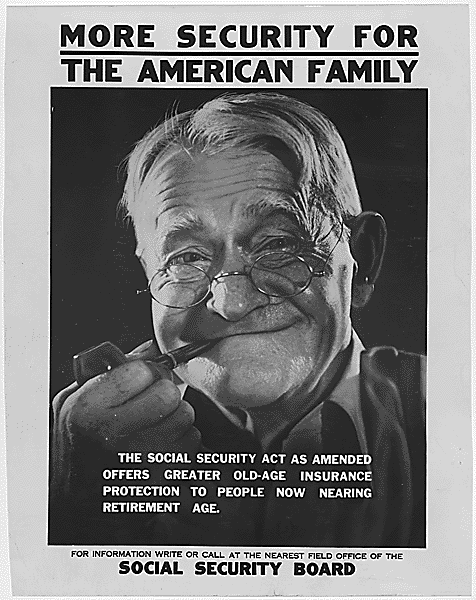A Promise in the Great Depression: The Birth of Social Security
On a hot Wednesday afternoon in Washington, D.C., President Franklin D. Roosevelt sat at his desk in the White House, surrounded by members of Congress, Cabinet officials, photographers, and journalists. The year was 1935. The country was deep in the Great Depression. For millions of Americans, work had disappeared, savings had vanished, and old age had become a source of fear instead of rest.

At 3:30 p.m. on August 14, 1935, Roosevelt picked up his pen and signed his name to a piece of legislation that would permanently reshape American life. It was called the Social Security Act, and it marked the first time the federal government took direct responsibility for the economic well-being of its older citizens.
The moment did not come with loud celebration or sweeping fanfare. But in that quiet room, Roosevelt’s signature set in motion a promise that the country would not abandon its workers when they grew too old to work.
A Nation in Crisis
To understand the weight of that day, we have to return to the depths of the Depression. The 1929 stock market crash had triggered a collapse that spread far beyond Wall Street. By 1933, a quarter of the workforce was unemployed. People had lost their homes, banks had collapsed, and breadlines extended across entire city blocks.
The crisis hit the elderly especially hard. In an era before pensions were common, many older Americans relied on their children or local charity to survive. As families struggled, those safety nets frayed. The elderly, the disabled, widows, and orphaned children frequently found themselves penniless, with no one to turn to.
Demands for reform were growing louder. Across the country, people asked why a government that could organize armies and build railroads could not offer some measure of protection against the hardships of old age and joblessness. While some states attempted to establish their own programs, the lack of federal coordination restricted their scope.
President Roosevelt recognized the need for a more comprehensive approach.
Building the Law
In 1934, Roosevelt created the Committee on Economic Security, chaired by Secretary of Labor Frances Perkins, the first woman in U.S. history to hold a Cabinet position. She brought together experts in economics, labor policy, and welfare, and they worked quickly to design a federal program that could stand the test of time.
The plan they delivered to Congress in January 1935 was bold. It proposed a national retirement system funded by payroll taxes, as well as federal support for unemployed workers, dependent children, and people with disabilities.
The bill faced tough opposition. Some critics called it too expensive. Others feared it would expand government power too far. Still others argued that Americans should save for their retirement. But Roosevelt stood firm, insisting that the federal government
had a duty to act in the face of mass poverty.
After months of debate, Congress passed the bill with strong bipartisan support. The final vote in the House was 372 to 33. In the Senate, it was 77 to 6.
The Signing
When Roosevelt signed the Social Security Act into law on August 14, 1935, he called it “a law that will take care of human needs and at the same time provide for the United States an economic structure of vastly greater soundness.”
The ceremony was modest. The bill itself was lengthy, printed on thick parchment, and placed on Roosevelt’s desk. As he signed, reporters clicked photographs and officials looked on. Frances Perkins, who had tirelessly fought to make the legislation a reality, later received one of the pens he used.

The law created a federal retirement system for workers aged 65 and older, funded by payroll contributions from both employees and employers. It also launched the first national unemployment insurance system and provided grants to states for public assistance programs.
At first, the program excluded many workers, especially in agriculture and domestic service jobs held largely by African Americans and women. These omissions reflected political compromises with Southern lawmakers and remain one of the early flaws of the law. But over time, Social Security expanded to include more people and more protections.
A Promise That Endures
In 1940, the first monthly retirement checks were sent out. The first recipient was Ida May Fuller, a schoolteacher from Vermont, who received a check for $22.54. She lived to be 100 years old and collected benefits for 35 years.
Since then, Social Security has become one of the most enduring and widely supported programs in American history. It provides retirement income to more than 50 million Americans, as well as disability benefits, survivors’ benefits, and a sense of stability in old age.
While most Americans may not recall August 14, 1935, it marked a significant shift in the country’s definition of its responsibilities. It marked a shift away from the idea that hardship in old age was a private burden and toward the belief that dignity in retirement should be a shared national goal.
On that summer day, in the midst of fear and uncertainty, the United States made a quiet but powerful promise: that in the face of life’s hardships, its people would not stand alone.

